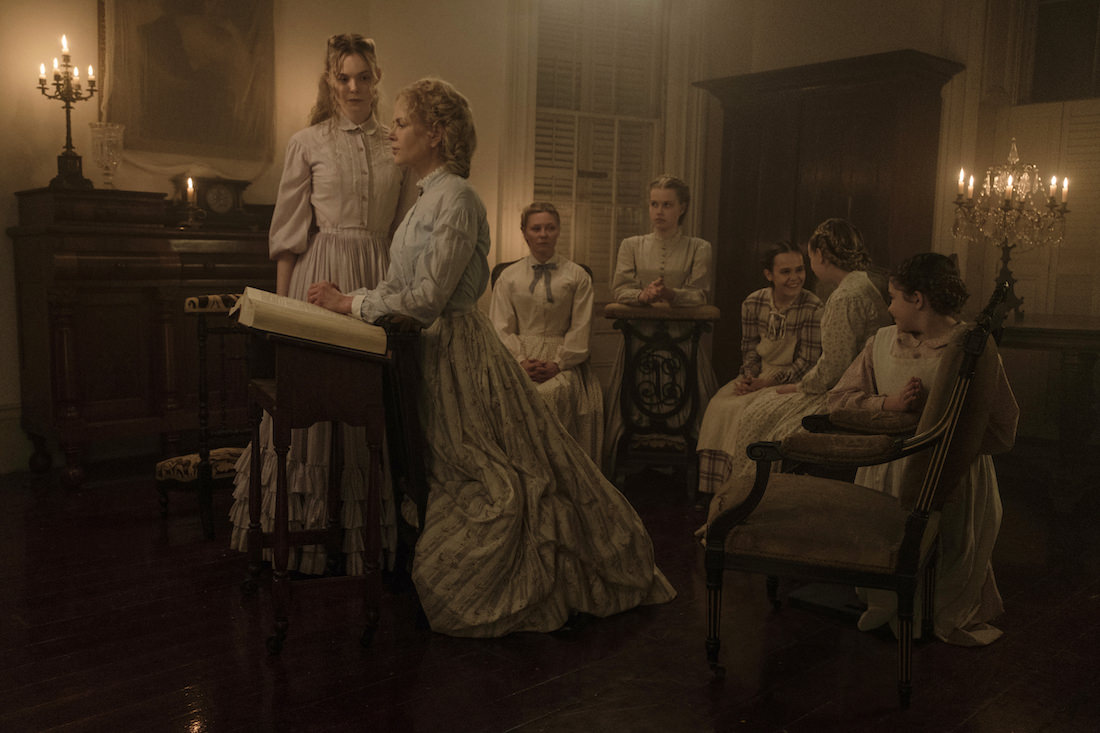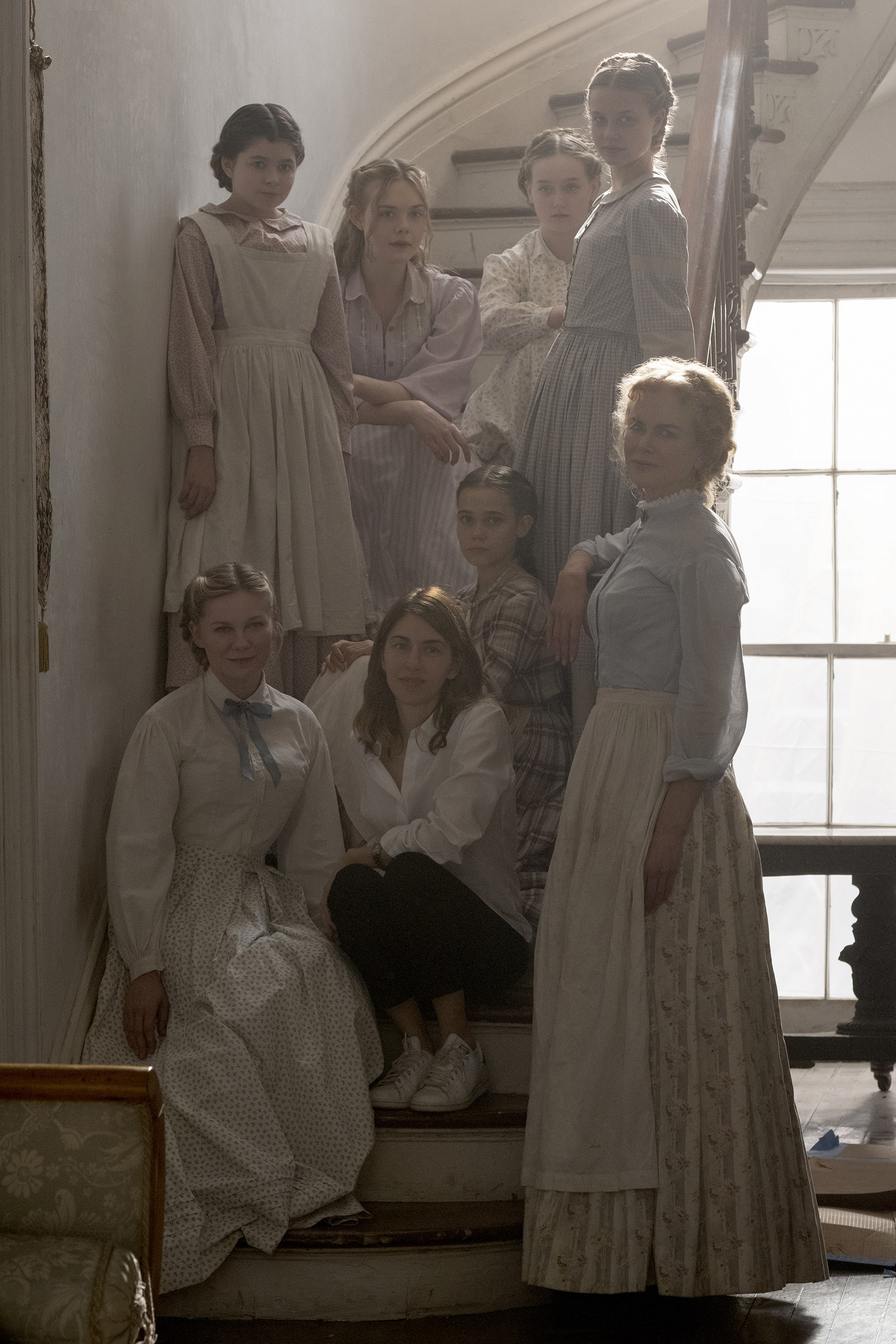Cinematographer Philippe Le Sourd on Creating The Beguiled‘s Elegant Terror
Earlier this year, Sofia Coppola premiered her version of The Beguiled, an atmospheric Southern drama based on the 1966 novel of the same name by Thomas P. Cullinan. Set in a remote Virginia girls’ school during the Civil War, the story depicts the ill-starred arrival of a wounded Union solder, John McBurney (Colin Farrell), whose manipulative presence is subtly pernicious, until descending into quiet chaos. Martha Farnsworth (Nicole Kidman) icily, elegantly steers her remaining students (among them, Elle Fanning and Oona Laurence) and one teacher, Miss Edwina (Kirsten Dunst) through the slow burn and downfall of McBurney’s machinations in this otherwise seemingly untouched boarding school. Like her projects that have come before, The Beguiled is still and beautiful to look at, taking ample creative license (Spanish moss does not, unfortunately, grow quite so amply in the state of Virginia as the movie would have it) in imagining an alluringly natural historical setting. Critics and audiences received it well; Cannes awarded Coppola Best Director, making her only the second woman to take home the award. To learn more about putting together the film’s captivating aesthetic, we talked to cinematographer Philippe Le Sourd about lensing The Beguiled, as well as another 2017 Coppola film, La Traviata.
One of the most striking aspects of the film’s look was the use of natural light. It makes you hyper-aware of the time of day, and the passing of the days. What was your approach?
I tried to make sure that we didn’t use too much artificial light or light that wouldn’t be shown in the period of that time. I looked for what was in photographs at the time. It was very natural, there was no artificial light. There was transference, and also in the opposite way, I wanted to tell a story with the light. So I needed to make sure that at the time of the day, the shooting was right, and the form for the period would be the same. I really like [the scenes with] Amy. [Played by Oona Laurence, Amy discovers the soldier in the woods while collecting mushrooms, and the film wraps up with her on a similar if more nefarious mission at the end.] I wanted everything to meld together, the characters, the color, the light.
We didn’t use a lot of camera movement. We wanted to follow the people, with long credits at the start of the movie. You follow the little girl, at the beginning, at her back. It’s also the last movement at the end, before you feel the girl and the women have escaped. You want to feel [also] that they are trapped and cannot escape. And with movement of the camera, in a certain way, we add more the emotion to the character. This relates to [film] history and Godard’s idea that the camera movement is part of the morality of cinema.
Can you talk about the film’s color palette? The women seem perpetually in contrast with their surroundings, but consistent with one another.
It was deliberate. I was influenced by Caravaggio. Like the aspect of the light in the story, it had to be very natural, conform to the idea of the light. I think the aspect of the dark, as part of the composition, also had to tell the story.

(l to r.) Elle Fanning as Alicia; Nicole Kidman as Miss Martha; Kirsten Dunst as Edwina; Angourie Rice as Jane; Oona Laurence as Amy; Emma Howard as Emily; and Addison Riecke as Marie in Focus Features’ atmospheric thriller THE BEGUILED; written for the screen and directed by Sofia Coppola. Credit: Ben Rothstein / Focus Features
The sets are beautiful, natural, idyllic. What did you do to create them?
Anne [Ross, the production designer] did a lot of work on the exterior [of the school] to make it feel the garden wasn’t taken care of any longer. Most of the rest was shot in a small location in New Orleans. Anne did a lot of work. We couldn’t shoot anywhere where a wall was light. We wanted to shoot the opposite tone that we had to the story. The world was so divided between men and women, so also, you wanted to express this by how you shoot it, the location, the choice of light, all to show this divide between men and women.
The shots are also very still. Was that to impart the frozen sense of these girls’ lives?
The stillness was very intentional. It was a different time, especially, in the 1800s, as you can see in the small woods scene, but the camera had to express this modern time, also. It’s more about gray than white and black, and that’s really something distinct about the final results. We’re very far away from the digital camera. The fact that we shot on film made the look very different. I couldn’t have done the same without film.
How was your experience working with Sophia Coppola?
I worked with her on a commercial and when she was directing La Traviata? So I knew her, a little bit. She’s a great artist, and has a great vision. It’s something really different to work with a man or a woman director. She expressed design in a completely different way, and a quieter, stronger way than a man can express. I think in this film that it’s very clear, this was shot by a woman. Any moment, dialogue, even violence is described in a completely different time. Sophia likes to tell the stories with something between the lines, where there are no words to describe that, and she’s very good that.

(l to r.) [Top Row:] Addison Riecke; Elle Fanning; Emma Howard; Angourie Rice; [Bottom Row:] Kirsten Dunst; Screenwriter and director Sofia Coppola; Oona Laurence; and Nicole Kidman on the set of Focus Features’ atmospheric thriller THE BEGUILED Credit: Ben Rothstein / Focus Features
Featured image: Nicole Kidman stars as Miss Martha in Focus Features’ atmospheric thriller THE BEGUILED; written for the screen and directed by Sofia Coppola. Credit: Ben Rothstein / Focus Features



